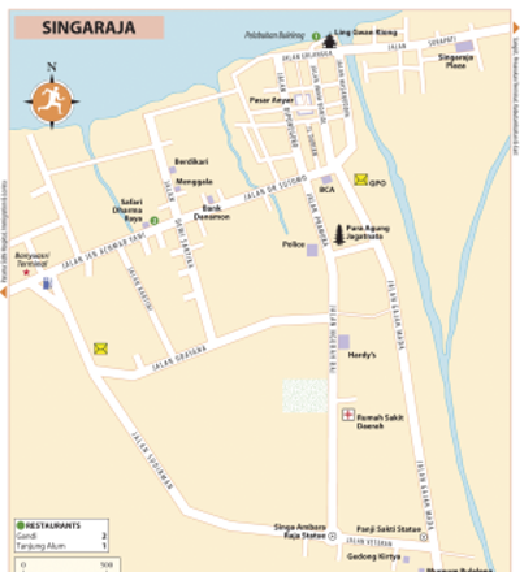Travel Reference
In-Depth Information
with a whirlwind of traffic in its streets and little concession to outsiders. Notwithstanding
the occasional monument and the broad avenues, there are few obvious reminders of its past
as the capital of Bali or of its role as the seat of the Dutch administration for the Lesser Sunda
Islands (which included Bali and all the islands east to Timor). Denpasar stole the crown as
capital and Benoa became Bali's primary port, and today Singaraja has to content itself in-
stead with being just the capital of the Buleleng district: images of
Singa Ambara Raja
,
the winged lion symbol of Buleleng, appear all over the city - “Singa Raja” means “Lion
King”. With the right eyes you can make out the shophouses and narrow streets of the ori-
ginal trading area: Jalan Hasanuddin is known as Kampung Bugis and Jalan Imam Bonjol as
Kampung Arab after the Muslim Bugis settlers from Sulawesi. The traditional market can be
fun if you haven't seen those in Denpasar. Otherwise there are only two cultural sights, the
best of which is a specialist
Gedong Kirtya library
of books made from
lontar
-palm leaves.
Neither will take more than an hour or two combined and are around 2km from the centre
- without your own transport, Singaraja makes for a sweaty, unrewarding day. All of which
means the city is not worth a dedicated visit - see it instead as a pause while transiting or part
of a day-trip to surrounding attractions.
Brief history
When
Gusti Ngurah Panji Sakti
founded the kingdom of
Buleleng
in the seventeenth cen-
tury, he built a new palace called Singaraja at the heart of his north-coast territory, then exten-
ded his dominion to Karangasem, Jembrana and parts of East Java. The regency's influence
fluctuated over the next 150 years, culminating in eventual defeat at the hands of the
invad-
ing Dutch
in 1849, who had launched a series of extended campaigns against the north coast.
The victorious colonialists took over the administration of Buleleng and set about building
roads, improving irrigation systems and encouraging coffee as a cash crop in the region;
European journalists, merchants and scholars began to settle in and around Singaraja, even as

